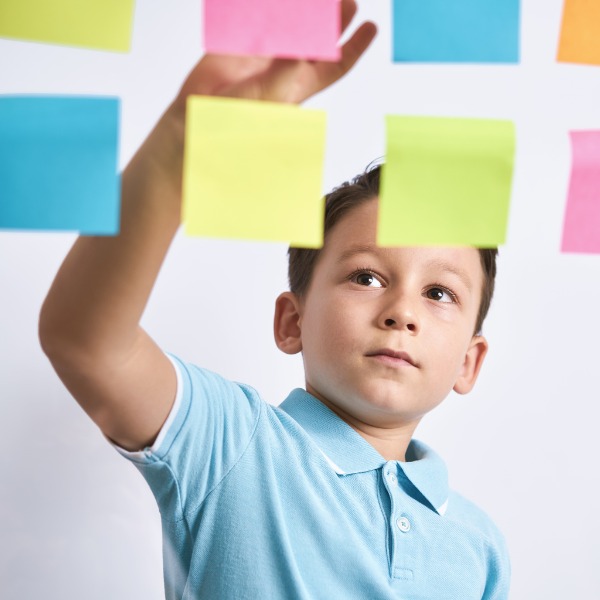Generate, Sort, Synthesize

Child with sticky notes (pinstock, iStockphoto)
This strategy helps students explore and synthesize information while incorporating and honoring individual points of view.
Why use it?
- To explore connections between ideas
- To scaffold the synthesis of big ideas
- To collaborate on a topic
How do I use it?
- Form groups of 3-4 students.
- Students generate ideas about a topic (e.g. How does what we learned at the symposium relate to what we are learning in class).Record each idea on a sticky note.
- Each member of the group shares their ideas in round robin fashion.
- As members are sharing, they should begin to cluster similar ideas together onto a piece of chart paper.
- Once ideas are clustered, groups should create labels for each cluster.
- Finally, groups create a synthesizing statement, incorporating the ideas, discoveries and insights shared through the process. Consider providing students with a sentence stem to get them started (e.g. The symposium connected to our classroom learning through ….).
- Invite each group to share their synthesizing statement with the whole class.
Variations
- This could be done as a whole class to support sharing of ideas and modeling the process.
- Consider having students rotate to a new group after they have created labels to synthesize another group’s ideas.
References
Adapted from: Lipton, L., & Wellman, B. (2011). Groups at work: Strategies and structures for professional learning (p. 66). MiraVia.